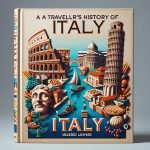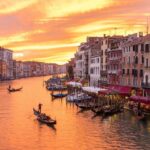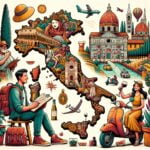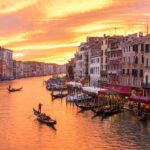A Traveller’s History of Italy, written by Valerio Lintner in 2004, offers an immersive journey through the rich and fascinating history of Italy. This section introduces readers to the book’s contents and the author’s perspective on Italian history. Lintner’s work provides an in-depth exploration of Italy’s ancient past, the Renaissance era, the Risorgimento, and modern Italy, making it an essential read for anyone seeking to understand the country’s cultural heritage.
In A Traveller’s History of Italy, Valerio Lintner presents a comprehensive overview of Italian history that is accessible to both scholars and casual readers. The book delves into key historical periods such as the Etruscans, Roman Empire, Renaissance, World War II, and modern-day Italy. Through his insightful analysis and engaging storytelling, Lintner offers a fresh perspective on these pivotal moments in Italian history.
Readers will also gain insight into how A Traveller’s History of Italy reflects Lintner’s own perspective on Italian history. Whether discussing the impact of ancient civilizations or the complexities of modern Italy, Lintner brings a unique blend of academic expertise and personal passion to his narrative. The book serves as a valuable resource for understanding not only Italy’s past but also its present cultural influence.
The Author
Valerio Lintner, the author of “A Traveller’s History of Italy”, offers a unique perspective on Italian history that brings the country’s past to life for readers. With his in-depth knowledge and passion for Italy, Lintner provides a comprehensive and engaging account of the nation’s rich cultural heritage. Born in 2004, this book has become an essential companion for travellers seeking to understand the historical context behind Italy’s famous landmarks and attractions.
Lintner’s approach to Italian history is not just about presenting facts and dates; he tells the story of Italy with a vivid narrative that captures the reader’s imagination. Through his writing, Lintner creates a sensory experience that allows travellers to visualize themselves walking through ancient Roman ruins, observing the masterpieces of Renaissance art, or witnessing the unification of Italy in the 19th century.
This storytelling style makes “A Traveller’s History of Italy” more than just a history book-it becomes a journey through time and space.
Furthermore, Lintner’s deep insights into Italian culture and society offer readers a holistic understanding of the country. He goes beyond recounting political events and wars by delving into the customs, traditions, and everyday lives of Italians throughout history. By doing so, Lintner provides travellers with a multifaceted view of Italy, enriching their experiences as they explore this captivating nation. Truly “A Traveller’s History of Italy” is indispensable for anyone seeking to grasp the essence of this remarkable country.
- Lintner’s comprehensive research on Italian history
- His storytelling approach to bringing historical events to life
- The book’s exploration of Italian culture alongside its political history
Exploring Italy’s Ancient History
Introduction to Ancient Italy
Italy’s ancient history is rich and diverse, filled with stories of ancient civilizations, legendary battles, and unparalleled cultural achievements. From the mysterious Etruscans to the mighty Roman Empire, this period of Italian history laid the foundation for much of European culture and civilization.
The Etruscans: Italy’s First Advanced Civilization
Before the rise of Rome, Italy was home to the Etruscans, an advanced civilization that thrived in central Italy between the 8th and 3rd centuries BC. Known for their impressive architecture, sophisticated metalworking skills, and unique burial practices, the Etruscans greatly influenced the development of Roman civilization.
The Roman Empire: Italy’s Golden Age
The Roman Empire stands as one of the most powerful and influential civilizations in history. From its humble beginnings as a small city-state on the Tiber River to its eventual domination of the Mediterranean world, Rome’s impact on Italian history cannot be overstated. Its achievements in law, engineering, philosophy, and military tactics continue to shape modern society.
As Valerio Lintner explores in A Traveller’s History of Italy Traveller’s Histories Valerio Lintner 2004, understanding these ancient periods in Italian history is crucial for appreciating the country’s enduring cultural heritage. Through his detailed analysis and engaging storytelling, Lintner brings to life the rise and fall of these ancient civilizations and their lasting impact on modern Italy.
Whether travellers are exploring ruined Etruscan cities or marveling at the grandeur of Rome’s architectural wonders, this historical masterpiece provides valuable insight into Italy’s ancient past.
The Renaissance
During the 14th to 17th centuries, Italy experienced a surge in intellectual and artistic pursuits, with a focus on humanism. This movement emphasized the potential achievement of individuals and the importance of studying classical texts and ancient civilizations. The revival of interest in literature, philosophy, and science led to a profound transformation in Italian society.
Artistic Achievements
The Renaissance produced some of the most celebrated artists in history, including Leonardo da Vinci, Michelangelo, and Raphael. These visionaries revolutionized the art world with their innovative techniques and iconic works such as “The Last Supper,” “David,” and “The School of Athens.” Their creations continue to attract millions of visitors to Italy each year, illustrating the enduring impact of this period on art and culture.
Cultural Legacy
The influence of the Renaissance extended beyond art, permeating various aspects of Italian society. This era saw significant advancements in architecture, music, politics, and education. The legacy of notable figures like Machiavelli, Galileo Galilei, and Petrarch continues to shape our understanding of Italy’s past and present. Valerio Lintner’s A Traveller’s History of Italy offers readers an in-depth exploration of this transformative period through detailed historical analysis and engaging narratives that bring the Renaissance to life.
Overall, The Risorgimento, or “Resurgence,” was a period of intense political and social change that ultimately led to the unification of Italy as a single nation. This movement, which took place in the 19th century, aimed to consolidate the numerous separate states and regions of the Italian peninsula into one unified country. Valerio Lintner’s book, A Traveller’s History of Italy, provides an in-depth look at this pivotal period in Italian history, offering insights into the key figures and events that shaped the birth of modern Italy. Lintner’s perspective on the Risorgimento is comprehensive, delving into the various factors that contributed to the unification process. He examines the influence of nationalist ideologies and revolutionary movements, as well as the role of key figures such as Giuseppe Garibaldi and Count Camillo di Cavour. By providing a detailed account of these historical figures and their impact on Italian unification, Lintner’s book offers readers a deeper understanding of this critical juncture in Italy’s history. A Traveller’s History of Italy also explores how the Risorgimento sparked a sense of national identity among Italians and laid the groundwork for modern Italian culture and politics. The unification process was not without its challenges, including internal conflicts and opposition from foreign powers. Lintner effectively captures these complexities, shedding light on the tumultuous nature of this transformative period in Italian history. Italy’s role in World War II was a complex and controversial one, as the nation found itself divided between supporting the Axis powers and later switching sides to join the Allies. Valerio Lintner’s “A Traveller’s History of Italy” delves into this tumultuous period of Italian history, providing insights into the political, social, and cultural impact of the war on the country. During World War II, Italy was ruled by dictator Benito Mussolini and his fascist regime, which aligned the country with Nazi Germany and Imperial Japan as part of the Axis powers. Mussolini’s aggressive expansionist policies led Italy to participate in several military campaigns, including the invasion of Ethiopia and Greece. However, as the tides of war turned against the Axis powers, internal conflict and resistance movements within Italy grew, ultimately leading to the downfall of Mussolini’s regime. In 1943, Italy signed an armistice with the Allies and declared war on Germany. This marked a significant turning point in Italy’s involvement in World War II as Italian troops now fought alongside Allied forces to liberate their own country from German occupation. Lintner’s book sheds light on this turbulent period in Italian history, examining how it shaped the nation’s identity and its post-war reconstruction efforts. Understanding Italy during World War II is crucial for any traveller seeking to comprehend the cultural heritage and resilience of this captivating country. In A Traveller’s History of Italy, Valerio Lintner provides a comprehensive overview of Italy’s economic growth and cultural influence in the modern era. The book delves into the country’s transformation from a divided nation during World War II to its emergence as a thriving economic powerhouse and a global cultural influencer. Lintner’s perspective on Italy’s modern history is shaped by his extensive research and deep understanding of the country’s socio-economic dynamics. He highlights Italy’s post-war reconstruction efforts, which propelled the nation into an era of unprecedented economic growth. As a result, Italy became known for its industrial development, technological advancements, and thriving tourism industry. Furthermore, Lintner explores Italy’s cultural influence on the global stage, particularly in the fields of art, fashion, design, and cuisine. The book discusses how Italian artists, designers, chefs, and filmmakers have made significant contributions to world culture, shaping trends and inspiring creativity around the globe. Moreover, A Traveller’s History of Italy also examines the challenges that modern Italy faces in terms of balancing economic development with preserving its rich cultural heritage. The book sheds light on how globalization and societal changes have impacted traditional Italian values and customs, prompting debates about maintaining authenticity in the face of rapid change. Overall, Valerio Lintner’s in-depth exploration of modern Italy in A Traveller’s History of Italy offers readers valuable insights into the country’s economic evolution and cultural significance. It encourages travellers to appreciate Italy not only for its historical landmarks but also for its contemporary contributions to the global community. A Traveller’s History of Italy by Valerio Lintner has had a significant impact on how travellers understand the cultural heritage of the country. This book offers a comprehensive look at Italy’s rich history, from its ancient beginnings to its modern era. Through the author’s thorough research and engaging writing style, readers are able to gain a deeper appreciation for the cultural influences that have shaped Italy into the remarkable nation it is today. One of the key impacts of A Traveller’s History of Italy is the way it allows readers to connect with the ancient history of the country. Lintner takes readers on a journey through time, exploring the rise and fall of civilizations such as the Etruscans and the Roman Empire. Through his vivid descriptions and detailed accounts, travellers are able to visit ancient ruins and historical sites with a newfound understanding and appreciation for their significance in shaping Italian culture. Furthermore, Lintner’s exploration of Italy’s Renaissance period provides readers with a greater understanding of how art and culture flourished during this time. The book delves into Italy’s role as a center for artistic innovation, showcasing how figures like Leonardo da Vinci and Michelangelo left an indelible mark on Italian culture. By learning about this golden age, travellers can better appreciate Italy’s lasting contributions to art, literature, and philosophy throughout history. Overall, A Traveller’s History of Italy serves as an invaluable resource for anyone seeking to delve into the cultural heritage of this remarkable country. With its in-depth exploration of Italian history and insightful analysis, this book has become essential reading for travellers looking to gain a deeper understanding of the cultural tapestry that makes up modern-day Italy. As such, it continues to leave a lasting impact on all who wish to explore Italy beyond its picturesque landscapes and picturesque cities. In conclusion, A Traveller’s History of Italy by Valerio Lintner is a must-read for anyone looking to explore the rich cultural heritage of Italy. Lintner’s comprehensive historical perspective provides readers with a deep understanding of the country’s ancient history, the Renaissance period, the Risorgimento, and modern Italy. This book offers valuable insights into Italy’s economic growth, cultural influence, and its dynamic journey as a nation. Through A Traveller’s History of Italy, Valerio Lintner brings to life the fascinating stories of the Etruscans, the Roman Empire, and the golden age of the Renaissance. Readers are able to grasp a deeper understanding of how these historical periods have shaped Italy’s national identity and cultural heritage. Lintner’s vivid storytelling and in-depth analysis make this book an essential resource for travellers seeking a deeper connection with Italy. Ultimately, A Traveller’s History of Italy serves as an invaluable guide for individuals who wish to gain a meaningful appreciation for one of Europe’s most historically significant countries. Whether exploring ancient ruins or admiring Renaissance art, readers will undoubtedly find Lintner’s work to be an indispensable companion that enhances their experience of travelling through Italy. So if you want to truly appreciate all that Italy has to offer in terms of historical richness and cultural significance, Valerio Lintner’s masterpiece is essential reading for your journey. The best history of Italy is a subjective matter, as it depends on what aspect of Italian history one is interested in. However, many consider “A History of Venice” by John Julius Norwich to be an excellent choice for understanding Italy’s historical development. Italy is a country located in southern Europe, known for its rich history, art, and culture. It has been home to great civilizations like the Romans and has had a significant impact on the world through its contributions to art, architecture, and literature. Yes, Italy is a country. It is located in southern Europe and is famous for its delicious cuisine, stunning landscapes, and rich cultural heritage. Italy has been influential throughout history in various fields such as art, architecture, and fashion. I’m a passionate traveler, writer, and Italophile. My fascination with Italy’s history, art, and culture has led me on countless adventures across the Italian landscape. Through “I Live Italy,” I share my love for this extraordinary country and aims to inspire others to explore its boundless beauty.Aspect Information Main Goal Unify numerous separate states and regions into a single nation Key Figures Giuseppe Garibaldi,Camillo di Cavour Challenges Internal conflicts and opposition from foreign powers Italy During World War II
World War II Italy Axis Powers alignment Mussolini’s fascist regime Armistice with Allies Liberation from German occupation Modern Italy
The Impact of a Traveller’s History of Italy on Understanding the Country’s Cultural Heritage
Conclusion
Frequently Asked Questions
What Is the Best History of Italy?
What Is the Summary of Italy?
Is Italy a Country Yes or No?







